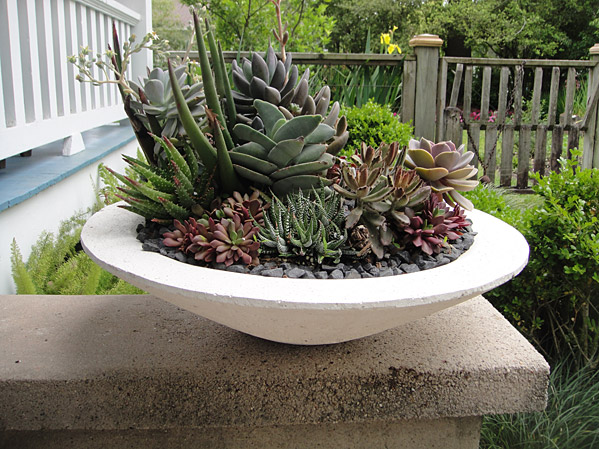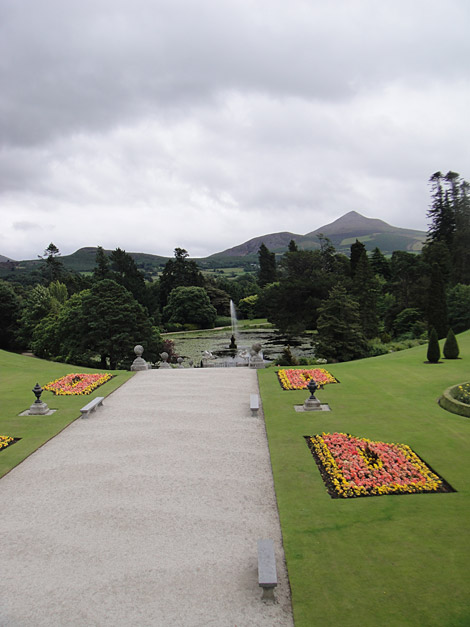A wee bit of history
The fundamentals of the Irish classical garden design are taken from the Italian Renaissance gardens, with all elements planned for the enjoyment of the sights, sounds and smells of the garden itself. The landowners were wealthy, and not only used the land for farming, but also for leisure and pleasure.
Designs are orderly, often times symmetrical. From broad grass vistas to quiet, private places appointed with statues, furniture and stone walls, the classic garden incorporates a myriad of design ideas. Water can be an integral part of the landscape. Strict formality and whimsy exist charmingly side by side.
Lessons learned
The gardens I visited in Ireland were remarkable in many respects, not the least of which was the size. None, or maybe few, of us enjoy such a luxury in our lives these days, but I think that we can take inspiration from the ideas, the plants, the perspective and bring bits and pieces of what we admire into our everyday lives.
We can take classical ideas and modify for our gardens. We can incorporate native or Houston-loving plants into a classical framework. We can be geometric or symmetrical in design. We can select trees or plants that shape and create the sensation we experienced in a strictly classical garden.
For me, it’s the feeling
Every time I travel, I return not only refreshed physically, but also reinspired as to design ideas beyond my usual thinking. I encourage you to look and discover designs that inspire. What is it about a fountain that intrigues you? What are you responding to – the colors, the shapes, the sounds? While we can’t tuck all the beauty of a 400-acre estate garden into to a Houston backyard, we can capture the essence and re-establish a certain sensation in a private situation.
So keep dreaming. Keep traveling. And keep calling – I love when you share your garden hopes and aspirations with me.
See you in the garden,
Mark McKinnon
What we’re working on
October is the other side of summer and in Houston, it’s our second spring. Our crews are busy with a variety of tasks, including:
- POTS. We’re replanting garden pots. I find that pots are an excellent way to try new plant materials and color combination. We have more control of the soil and also the drainage.
- IRRIGATION. We’re reprogramming irrigation systems, cutting back and reducing irrigation to avoid fungus.
- RYE GRASS. October is when we plant rye grass to keep lawns lush and green throughout the holidays.
These may seem like minor garden tasks, but with our busy lifestyles, they are hard to get around to. If you’d rather spend your weekends enjoying the garden – or the football game – call us at 713.869.2797. We’d love to help with your fall chores.
Future Green
To be certain you receive shades of green, please add us to your address book. If you have a friend who would like to receive this newsletter, please send us their e-mail address. We appreciate comments or questions. Write us at 1137 West 26th Street, Houston, Texas 77008; call 713.869.2797, e-mail us [email protected], or visit mckinnonassociates.com.
 This summer, in Ireland, on the outskirts of Dublin, I enjoyed a vacation that served as a wonderful refresher course on the beauty and nuances of the classical garden. Driving through the countryside with the quaint villages set in the hills was a delight in itself, but when we arrived at our destination, the grounds and the gardens were nothing less but stunning.
This summer, in Ireland, on the outskirts of Dublin, I enjoyed a vacation that served as a wonderful refresher course on the beauty and nuances of the classical garden. Driving through the countryside with the quaint villages set in the hills was a delight in itself, but when we arrived at our destination, the grounds and the gardens were nothing less but stunning. 